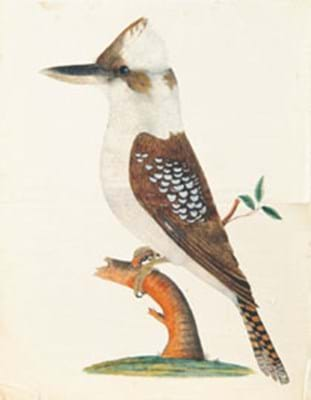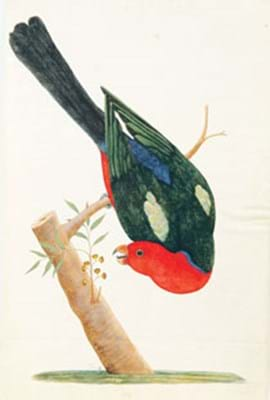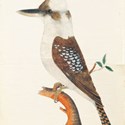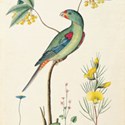The 56 watercolours date from the time of the First Fleet, the seven ships which took the earliest convicts and settlers from England to Australia in 1787. They are attributed to George Draper, a midshipman on the flagship Sirius and one of the First Fleet's most talented artists.
The price paid for the folio by the NLA has not been disclosed. However, individual First Fleet pictures can command £30,000-£50,000 and the price paid for this collection was said to be in line with market values. This would put the sum at well over the £1m mark and make it the largest private treaty sale ever negotiated by a UK regional auctioneer.
Clive Stewart-Lockhart, Dreweatt Neate's senior picture specialist, who was the first representative of the firm to view the folio explained: "This sale is an important deal for Dreweatt Neate as it represents many months of research, and has drawn on the expertise of a number of specialists in several different academic fields."
Certainly the tale of how the firm pieced together the history and significance of the folio is an object lesson in how detective work can yield dividends.
The folio had been the property of the Ducie family, and in storage for a number of years. When Mr Stewart-Lockhart initially viewed it, he reckoned it was more valuable than originally suggested. He brought in Christopher Foley, an experienced academic researcher.
Most of the images in the folio were unidentified and unsigned watercolours of birds and plants which Mr Stewart-Lockhart had concluded were almost certainly Australian in origin.
However, it was the smaller group of signed pictures which gave the first clue to the real importance of their identity. These were three drawings by Robert Adam for schemes at Osterley House, West London in 1777.
Osterley was the property of Sarah Child, the wealthiest woman in England in the late 18th century, and is directly opposite Spring Grove, the home of Sir Joseph Banks, one of the great figures in the early discoveries of James Cook. Osterley had a menagerie that included a Tahitian parrot thought to have been given to Sarah Child by Banks following his voyage there with Cook in 1769. The folio also includes a group of 18 prints of the menagerie's birds.
The initial challenge for the auctioneers was to identify the birds and plants and also to draw a connection between Sarah Child and the Ducie family. It emerged her first marriage to Robert Child in 1763 ended with his death in 1782 and she subsequently married the 3rd Baron Ducie in 1791.
This marriage was short-lived as she died in May 1793. This meant that if these drawings were once her property they must have been back in England by 1793. George Raper is known to have returned to England on April 22, 1792, 13 months before her death. No other identified artist would have returned to England from Australia in time.
It is known that Raper travelled with the First Fleet to Sydney, painting the region's flora and fauna. He also visited Cape Town several times on his travels, which would explain the apparently random inclusion of the three African birds in the folio.
Mr Foley and Annette Wilson, an Australian botanist, identified the plants and birds in the folio as coming from the Sydney area.
Meanwhile in London, Mr Stewart-Lockhart compared the watermarks in the folio with those of the 500-odd drawings in the National History Museum of the same period. Once the data had been gathered, Richard Chandler of the Department of Statistical Science, University College, London, conducted a statistical survey to prove that the paper was from the same population as all other known First Fleet drawings.
It also transpired that the drawings in the folio were the prime versions of a group that appear in an important album held in the National Library of Australia, called the Hunter Sketchbook. Once the property of John Hunter, the captain of Raper's ship HMS Sirius, this has hitherto been considered one of the most important early works of art done in Australia.
For final confirmation Mr Stewart-Lockhart took the folio to Canberra.
Linda Groom, Picture Librarian at the National Library of Australia, checked the flowering dates of all the plants in the collection against the known dates that Raper was in Sydney. There was a perfect match. The National Library of Australia accepted the accuracy of Dreweatt Neate's research, and immediately expressed an interest in acquiring the folio.
The NLA have also recently acquired a group of Raper's coastal views from his descendants so the Ducie portfolio can now be seen alongside the Hunter Sketchbook for the first time in over 200 years.
First Fleet folio sails to record treaty sale
Dreweatt Neate Fine Art have arranged a major private treaty sale to the National Library of Australia, on behalf of a prominent UK family, of a historically important folio of watercolours.










